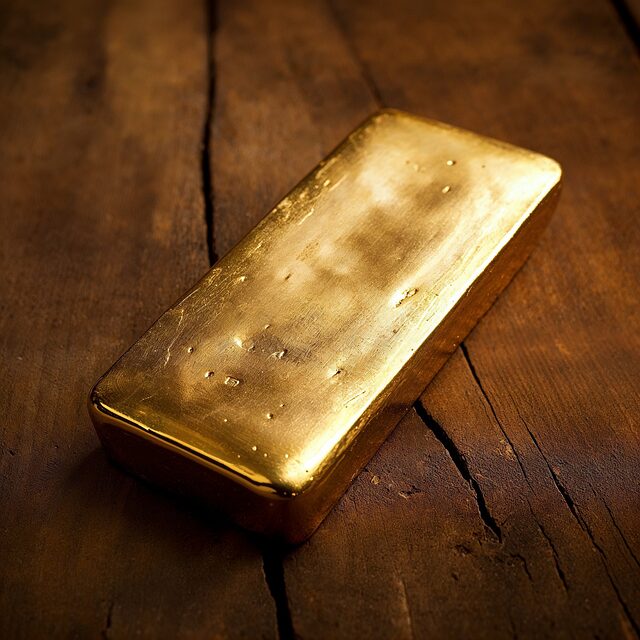Precious Metals IRAs enable investors to include physical gold, silver, platinum, and palladium within their retirement portfolios, offering diversification and protection against inflation and market volatility. These investments must meet IRS purity standards and be stored securely with an approved custodian. Precious metals serve as 'safe haven' assets, historically maintaining value during economic downturns, and can offer tax advantages within self-directed IRAs. Investors should consult specialized firms like Goldco and Augusta Precious Metals for guidance on navigating the rules, procurement, and storage of these assets. A rollover from existing retirement accounts is necessary to transfer funds into a precious metals IRA, following IRS regulations to avoid taxes and penalties. The IRS also dictates the types of precious metals eligible for investment within an IRA, emphasizing on gold and silver coins or bars with specific purity levels, and providing options for secure storage through custodians, whether it be segregated or unallocated. Ensuring compliance with these guidelines is crucial for leveraging precious metals as a strategic component of a diversified retirement investment strategy.
Explore the convergence of wealth preservation and retirement planning through Precious Metals IRAs. These accounts offer a unique avenue for investors to safeguard their future by integrating tangible assets like gold, silver, platinum, and palladium into their retirement strategies. Delve into the realm of these investment vehicles, understand their benefits, identify top-tier service providers, and navigate the process of transferring existing retirement funds. Gain insights into selecting and safeguarding your physical precious metals to fortify your financial portfolio against market volatility. This comprehensive guide will illuminate the path to a diversified retirement with precious metals.
- Understanding Precious Metals IRAs
- Benefits of Diversifying with Physical Gold and Silver in Retirement Accounts
- Top Precious Metals IRA Companies
- The Process of Rolling Over to a Precious Metals IRA
- How to Select and Store Precious Metals for Your I
Understanding Precious Metals IRAs

Precious Metals IRAs offer investors a unique opportunity to diversify their retirement portfolios with physical gold, silver, platinum, and palladium. Unlike traditional IRAs that primarily invest in stocks, bonds, or mutual funds, these accounts allow for the direct ownership of precious metals, providing a tangible asset that can act as a hedge against inflation and market volatility. The IRS governs these accounts with specific rules regarding eligibility, contribution limits, and acceptable types of metals. For instance, the metals must meet certain purity standards, and storage requirements often necessitate using an approved depository. Investors looking to include precious metals in their IRAs should thoroughly understand the tax implications, custodial responsibilities, and the process for acquiring and storing the metals within the IRA framework. By doing so, they can effectively incorporate these valuable assets into their long-term retirement strategy, potentially enhancing their financial security and diversification. It’s crucial for those considering a Precious Metals IRA to engage with reputable companies that specialize in this area, as they can provide guidance through the setup process, assist with purchases, and ensure compliance with all legal and regulatory requirements.
Benefits of Diversifying with Physical Gold and Silver in Retirement Accounts

Incorporating physical gold and silver into a retirement account can offer a range of benefits that complement traditional investment portfolios. Gold, often viewed as a ‘safe haven’ asset, has historically retained its value during economic downturns, providing a hedge against inflation and currency devaluation. This means that when the value of paper currencies decreases due to inflation, the value of gold often increases, thus preserving the purchasing power of retirement savings. Similarly, silver, known for its industrial applications and investment appeal, can serve as both a functional commodity and a monetary asset, offering diversification and potential for growth. The inclusion of these precious metals can reduce the overall volatility in an investor’s portfolio, as they often exhibit a low correlation with stocks and bonds, thereby offering a measure of protection against market fluctuations. Additionally, holding physical gold and silver within a retirement account can be advantageous from a tax perspective, as the IRS allows for the tax-deferred or tax-free growth of these assets within a self-directed IRA. This tax benefit adds another layer of value to using precious metals as part of a retirement strategy, making it an attractive option for investors looking to secure and diversify their retirement savings.
Top Precious Metals IRA Companies

When considering the integration of physical precious metals into an Individual Retirement Account (IRA), investors often look to top precious metals IRA companies for guidance and services. These firms are specialists in navigating the intricacies of self-directed IRAs, facilitating the purchase, storage, and management of gold, silver, platinum, and palladium within retirement accounts. Prominent in this space is Goldco, known for its customer service and educational resources; it assists clients with transferring or rolling over existing retirement funds to include precious metals as part of a diversified investment strategy. Another reputable company is Augusta Precious Metals, which offers personalized services and a comprehensive approach to asset allocation. They provide detailed information on the benefits of adding these tangible assets to one’s portfolio, emphasizing the historical stability and potential for growth that precious metals can offer. Both companies are well-regarded for their transparency, competitive pricing, and commitment to compliance with IRS regulations, making them reliable options for investors looking to expand their retirement savings with physical precious metals.
The Process of Rolling Over to a Precious Metals IRA

When investors decide to diversify their retirement portfolio by incorporating physical precious metals, the process begins with a rollover from an existing retirement account, such as a traditional or Roth IRA, or an employer-sponsored plan like a 401(k). This transition is facilitated through a procedure known as a “rollover.” The investor’s current financial institution initiates the rollover by transferring the funds directly to a custodian approved for precious metals IRAs. It’s crucial to choose a reputable precious metals IRA provider, as they must be licensed and adhering to strict regulations set forth by the Internal Revenue Service (IRS). Once the new account is established, the custodian provides a list of eligible precious metals that comply with IRS standards. These must be purchased from a dealer who also meets IRS guidelines. The actual transfer of funds is a straightforward process, but it requires careful attention to detail and adherence to IRS rules to avoid taxes and penalties. After the rollover is complete, the investor can select from a variety of physical precious metals to include in their IRA, confident that they are part of a secure and compliant retirement strategy. The process ensures that investors can enjoy the potential benefits of owning tangible assets within their retirement portfolio while maintaining compliance with IRS regulations.
How to Select and Store Precious Metals for Your I

When considering the addition of precious metals to your Individual Retirement Account (IRA), selection and storage are critical components that require careful attention. To select appropriate precious metals, ensure they comply with IRS guidelines for acceptable assets within an IRA. Gold and silver coins or bars, platinum bars, and palladium bars that meet the fineness requirements set forth by the IRS can be included. Look for items from reputable mints or refiners, and consider the purity and condition of the metals. For instance, gold coins or bullion must contain at least .995 pure gold, while silver should have a minimum of .999 fineness.
Storage solutions for your precious metals in an IRA are equally important. The IRS mandates that these assets be held by a custodian that is approved for precious metals IRAs. This custodian will typically provide secure storage options, either in a domestic or international depository. It’s advisable to choose a custodian with a robust track record and a strong reputation for security and compliance. Additionally, consider the insurance policies in place, the security measures at the storage facility, and whether they offer segregated or unallocated storage. Segregated storage allows you to hold your metals separately from others, offering more control and traceability, while unallocated storage pools your investment with others, which can be more cost-effective but offers less individual control. Regardless of the option chosen, ensure that your precious metals are stored in a manner that maintains their purity and value, safeguarding them for your financial future.
Investors looking to diversify their retirement portfolios with tangible assets will find that precious metals IRAs offer a compelling option. By integrating physical gold, silver, platinum, and palladium into their retirement strategies, individuals can potentially hedge against market volatility and inflation. The selected precious metals IRA companies provide valuable services to facilitate this process, ensuring compliance with IRS regulations while offering secure storage solutions. For those interested in adding a layer of stability to their financial future, understanding the intricacies of precious metals IRAs is key. As outlined in this article, from selection to storage, each step in the process is critical to maximize the benefits of these investments. With careful consideration and the right guidance, incorporating precious metals into your IRA can be a strategic move for long-term financial security.
